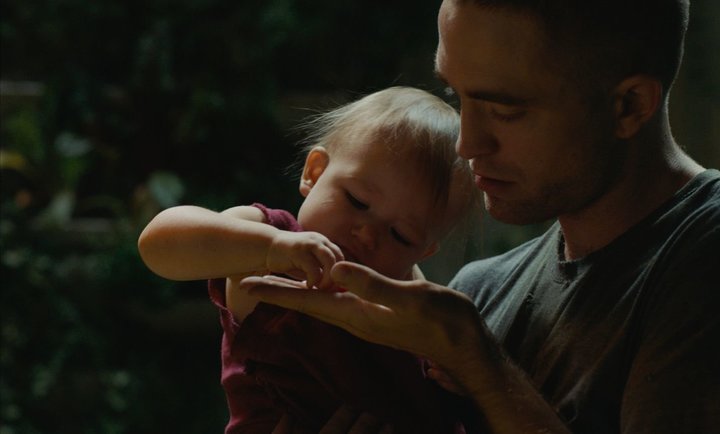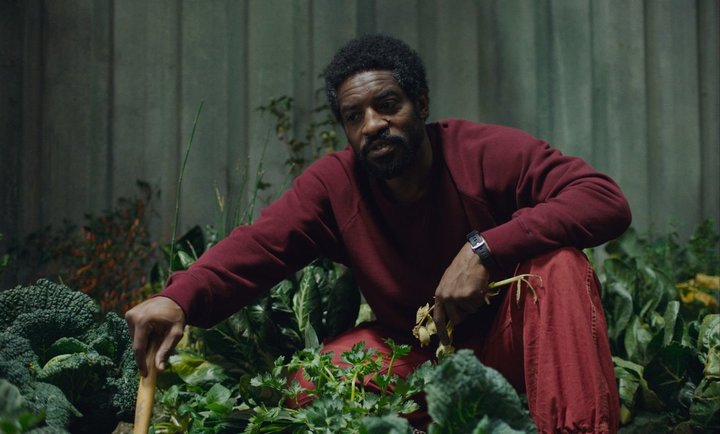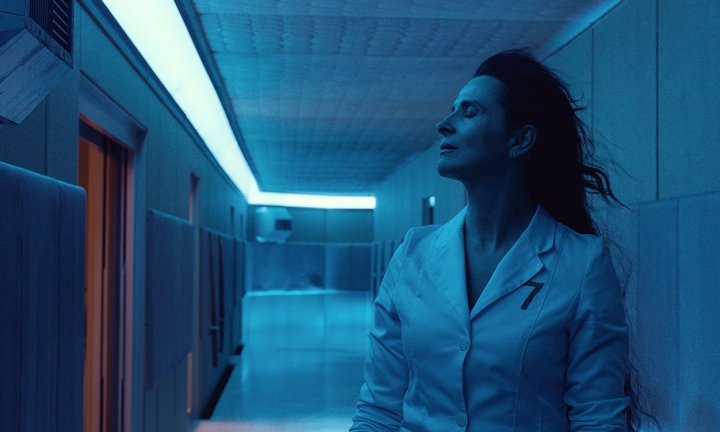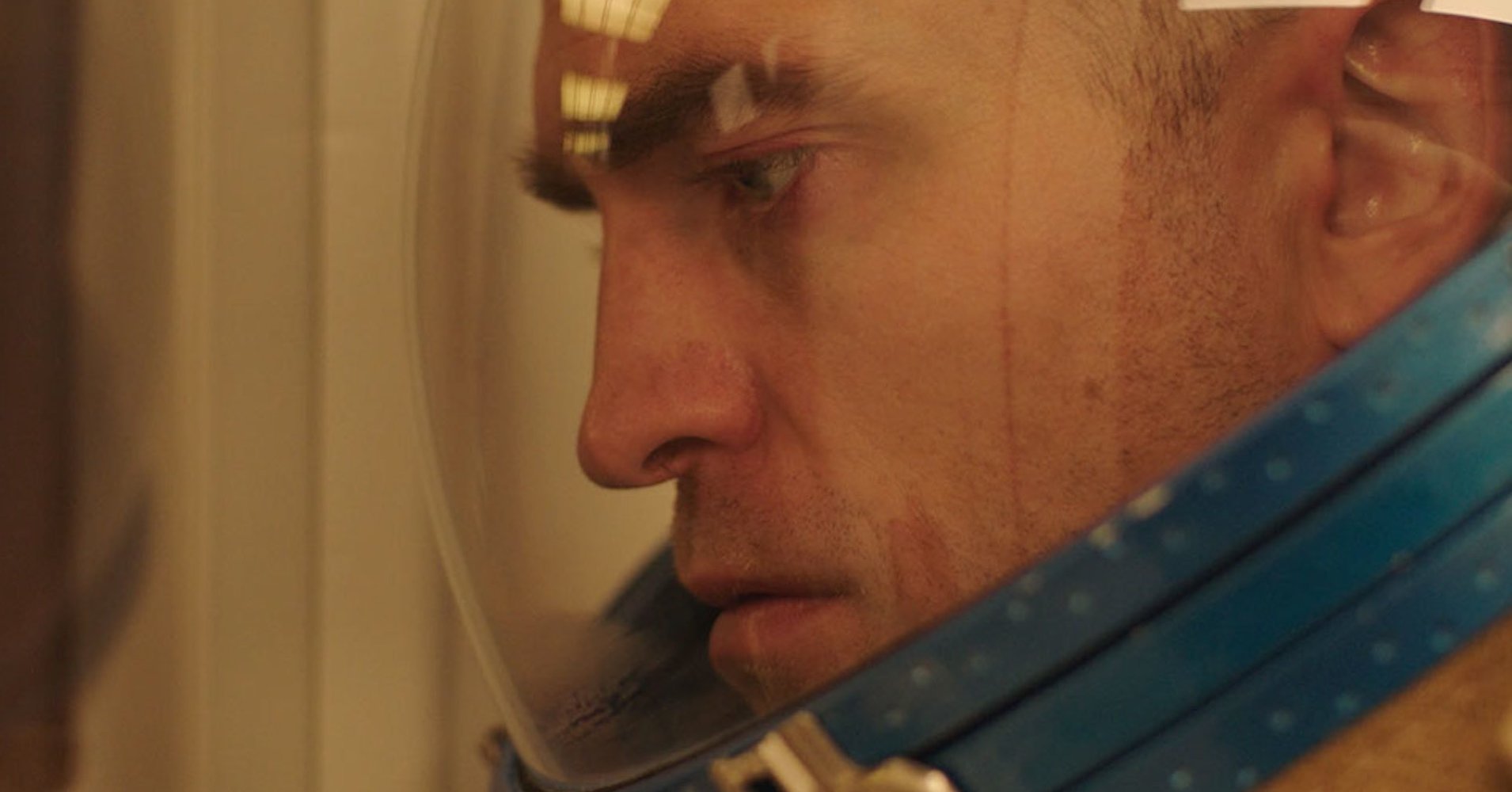[ad_1]
In the seven years since the “Twilight” series ended, Robert Pattinson has successfully shed his matinee-idol roots. From “The Lost City of Z” to “Good Time,” the actor’s recent roles are quiet, edgy and idiosyncratic, his intense smolder defying the effortless charm expected of most male movie stars. These days, Pattinson is doing nothing to preserve the mania he once stoked as America’s foremost teen-vampire heartthrob.
Case in point: “High Life,” the hypnotic new sci-fi film in which Juliette Binoche cups Pattinson’s semen in the palm of her hand. Bella Swan would never.
“High Life,” which opened in limited release last weekend and expands to additional theaters on April 12, is the latest reverie from Claire Denis, the 72-year-old French director known for intimate psychological portraits like “Beau Travail,” “White Material” and “Let the Sunshine In.” Pattinson plays Monte, a prisoner aboard a vessel sailing toward a black hole.
Monte is among a handful of death-row inmates who volunteered to live out their sentences in space ― a cosmic suicide mission that could reap vague benefits for Earth’s sustainability. The science isn’t essential. It’s the melodrama on the ship that keeps “High Life” floating ― specifically the Fuckbox, a dim room in which passengers straddle a chair with a metal dildo for pleasure. That’s one of several eyebrow-raising details that feed the movie’s trippy brilliance and confirm Pattinson’s penchant for the bizarre.
Denis has been a fan of Pattinson’s since taking her niece to see “Twilight” in 2008. (“I love vampire stories,” she said, having made one herself called “Trouble Every Day.”) Now the duo have an easy banter, even if they insist they didn’t communicate much during the shoot. As Denis munched on bagels and Pattinson sat with a vape pen by his side, we sorted through several “High Life” highlights at distributor A24’s New York office last week.
Sweet Daddy R-Patz

“High Life” opens with a baby’s cries. The toddler belongs to Monte, who is communicating with her through a speaker system while fixing a part on the spaceship’s exterior. (Reflecting the film’s roughly $9 million budget ― a modest sum for a sci-fi marvel ― the darkness of outer space was brought to life with a simple black drape.) As he ventures indoors, we learn that they are the only two surviving passengers, left to schlep around in solitude as the days crawl by. Monte, languid and coolheaded, dotes on little Willow the way you’d want Pattinson to fawn over your own love child, by cooing and playing games and advising her not to drink her own urine (of course).
This was the image, Denis said, that inspired the entire project: a man and a baby, alone in space. But how did they get there? And where did everyone else go? Her writing partner, Jean-Pol Fargeau, suggested a germ outbreak, but she didn’t think that was plausible years into the expedition. Denis, imagining a narrow corridor on the ship that somewhat resembled a prison hallway, decided the crew would consist of inmates who’d exchanged their death sentences for a voyage to the stars ― return trip not included.
Pattinson and the baby, played by Scarlett Lindsay, became the perfect duo. As the cameras were rolling, Lindsay started mimicking Pattinson’s actions as if she, too, were in character. Like father, like daughter. When Monte pounds on an air vent to get it working again, Willow reaches out to bang the contraption herself. When he tries to feed her a strawberry, she removes it from her mouth and attempts to feed it back to him. “If it was an actress, you’d say, ‘This is genius,’” Pattinson exclaimed.
Willow humanizes Monte, whose deadened eyes and exhausted gait immediately tell us that he has weathered several storms in his lifetime, including the figurative one that wiped out his fellow convicts.
“Initially, when I was just reading [the script], I was thinking I wanted Monte to foreshadow the potential danger that the child was in,” he said. “I was thinking there should be something that feels off about this. But as soon as you start doing it with a baby, you’d have to be such a weirdo to not react. To think that it’s just you and this creature, it softened the whole thing.”
Outer Space Is But A Dream In Which André 3000 Plants Vegetables

After about 14 minutes of Monte ambling around the ship ― in between child care, he tends to a garden and logs his vitals in a computer so the life support system will remain active for another 24 hours ― it’s time to start figuring out what’s been going on in this interstellar enigma. We know there were once other pilgrims aboard because we watch Monte thrust their corpses into the abyss, where they drift off like ghosts in perhaps the most haunting outer-space image I’ve seen on film. It’s Monte’s way of ridding himself of the past.
From the outset, Denis wanted “High Life” to feel like a nonlinear dream, ripe with strange imagery that may or may not relate to the plot. As far as space movies go, she prefers “2001: A Space Odyssey” and “Solaris” ― surreal meditations that don’t require noisy action to convey terror. Denis didn’t want her characters to look like soldiers heading to war. “I don’t like when it’s too bellicose, when it’s too conquest, when it’s too ‘get those fucking aliens out,’” she said in an accent that’s Parisian by way of West Africa, where Denis grew up.
Everything that unfolds after Monte disposes of the dead bodies requires a little patience from the audience. Without overexplaining the timeline, Denis shows us a period when the ship had about a dozen people communing together, played by the likes of Mia Goth, Lars Eidinger and a personal favorite of hers, OutKast’s André Benjamin, who required Denis to take a meeting with him in Atlanta before he’d accept the gig. Bet you never thought you’d see Edward Cullen and André 3000 socializing onscreen. (At Benjamin’s lunch with Denis, Queen Latifah ― OutKast’s former manager ― popped by unannounced to get a read on the director. “She wondered what kind of a woman I was,” Denis said, recalling how starstruck she felt. “She wanted to check on me. And I passed.”) As they navigate the cosmos, prisoners escape their crime-ridden pasts with group exercise, vegetable planting and periodic masturbation. Speaking of which …
The Fuckbox, Or How Juliette Binoche Came To Cup Robert Pattinson’s Semen

In space, no one can hear you scream. But they can see you ejaculate.
While planning the spaceship’s interior, Denis focused on two areas. First, the garden: a green, fecund reminder of life on Earth. And second, a room where someone can, at last, be alone. What might a person do in that room? Satisfy their horniness, of course.
If only it were that simple. The Fuckbox, as it’s called, contains an apparatus with a silver dildo ― ready for either end, Denis said ― stationed at the edge of a seat that’s waiting to be straddled. The room is dark. Bondage straps hang from the ceiling. When the ship’s dastardly Dr. Dibs (Binoche) partakes in the pleasure in a particularly bewitching scene, it’s as if she’s in a trance, writhing around like a carnal beast. But she doesn’t reach orgasm; the device is too mechanical to fully satisfy her. That personal deficit further drives Dibs’ efforts to breed new live on the ship via incubation ― a task that prompts her to climb atop Monte, bring him to completion and carry the discharge in her cupped hands so she can insert it into a younger prisoner (Goth).
But back to the Fuckbox, which Denis first called the “love machine,” until a writer friend urged her to think of something punchier so as to distance the device from the famous Excessive Machine seen in the Jane Fonda romp “Barbarella.”
“I remember when [producer Oliver Dungey] first showed me the Fuckbox and that chair,” Pattinson recalled. “It’s the most horrendous-looking thing. That’s from a sex shop. It had a metal piece ― it looked like a bayonet. When Oliver showed it to me, I thought he was joking. Everyone else was afraid to go into it.”
Initially, Denis said, the Fuckbox was “more sophisticated.” Upon entering, a participant could select images corresponding to their sexual fantasies that would be projected on the wall. (Like the rest of us, Dibs’ image would be Monte.) Denis also wanted to incorporate animal skins, so she bought a lion hide at a thrift market. But both the projection and the prints proved too expensive, and instead Denis fashioned a minimalist chamber that derives eroticism from its sparseness. With less stimuli, there’s more time to focus on one’s individual desires.
But those desires also foment conflict on the ship, as Dibs keeps a tight leash on what people do with their bodies outside the Fuckbox. She is, in Monte’s words, a “shaman of sperm” ― an autocratic role that leads to the cataclysm that leaves Monte and Willow without any company.
As for the cum Binoche fondles? That’s made with yogurt, old milk and a hint of yellow dye. “Not a healthy diet in space,” Pattinson said with a grin.
Binoche, an Oscar winner known for austere dramas, didn’t mind. “She really enjoyed it, I have to say,” Denis recounted. “Juliette is fun. She loved carrying that semen.”
[ad_2]
Source link

